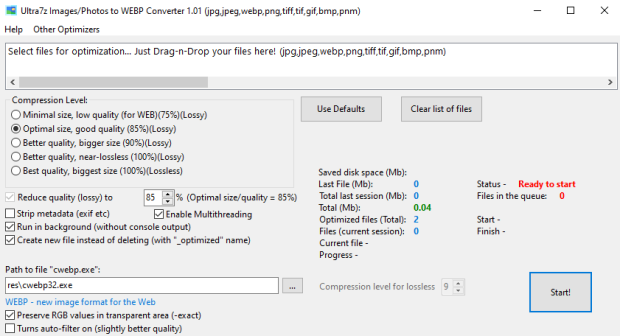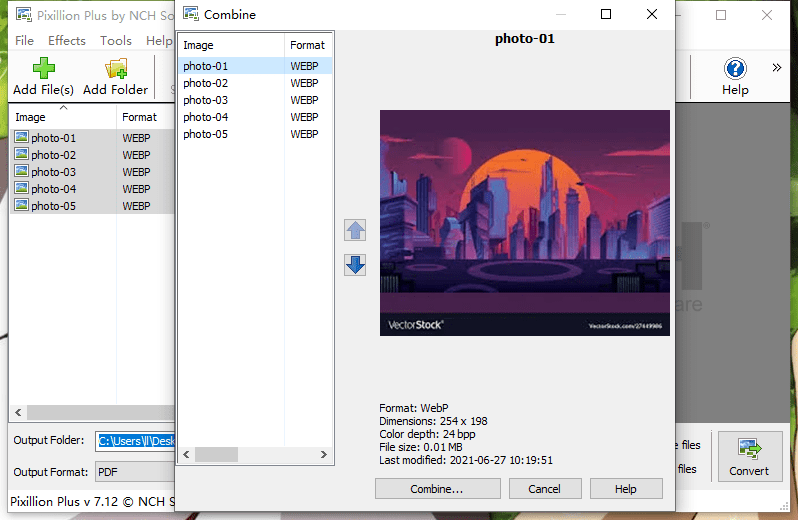

Once you have optimized your images, you can go to a blog post or page containing several images. Your images will now be optimized, and EWWW optimizer will generate WebP versions for your images. The plugin will then show you the number of images it found, so you can click on the Optimize button to proceed. You can check this option if your images are already optimized.Īfter that, click on the ‘Scan for Unoptimized Images’ button to continue. On the next screen, the plugin will give you an option to skip the image compression and only convert them to WebP. Next, click on the Select All checkbox at the top to select all images.Īfter that, click on the Bulk Actions drop-down menu and select Bulk Optimize option. This way you will be able to quickly select a large number of images for bulk optimization. If you have 1000+ images, then those images will appear on the next page. htaccess method, but it will get the job done.īulk Convert Your Old Images to WebP VersionĮNext, you need to click on the Screen Options button and change the ‘Number of items per page’ to 999. If the preview image turns green, then this means you have successfully enabled WebP image delivery on your WordPress site.Īlternately, you can choose from JS WebP Rewriting or WebP Rewriting methods as your WebP delivery options. Once you’re done, return back to the plugin’s settings page and click on the Save Changes button again. In that case, you need to copy the rewrite rules from the plugin’s settings page and paste them at the bottom of your. Sometimes, the plugin may not be able to insert the rules. If the plugin is successful in adding those rules, then the red image preview will turn into green with the ‘WebP’ text. You need to click on the ‘Insert Rewrite Rules’ button, and the plugin will automatically try to insert these rewrite rules to your. The plugin will now show you some rewrite rules with a red preview image. Next, you need to scroll down to the WebP Conversion section. Scroll down and check the box next to the ‘WebP Conversion’ option.Īfter that, click on the Save Changes button to store your settings.
#BULK IMAGES TO WEBP CONVERTER INSTALL#
Using WebP Images in WordPress with EWWW OptimizerĮFirst thing you need to do is install and activate the EUpon activation, go to the Settings » EOn the next screen, you will see a bunch of plugin options.
#BULK IMAGES TO WEBP CONVERTER HOW TO#
Here is how to use WebP images in WordPress. If your site uses lots of images, and they are slowing down your WordPress blog, then you should definitely consider using WebP images. Image compression plugins can convert your existing images into WebP format and display JPEG or PNG images as the fallback option on browsers that don’t yet support WebP. If many of your users use unsupported browsers, then you should consider using an image compression plugin. This means you can save and upload your WebP images to your WordPress website without using a plugin.īut having said this, you still might like to use an image compression plugin on your WordPress site. Since WordPress 5.8, WordPress has supported WebP images by default. It is a recommend best practice to be used along with a WordPress caching plugin, CDN, and more. WebP images can help you speed up your WordPress website. However, most modern browsers like Google Chrome, Firefox, and Microsoft Edge support WebP images. Since WebP is a new file format, it is not yet supported by all browsers. To learn more about image compression, see our guide on how to optimize images for the web. If images are slowing down your website, then converting them to WebP format can improve your page load speed test scores.

By using the WebP image format, your images will be 25-34% smaller in file size than PNG and JPEG without losing quality. WebP is a new file format for images to be used on the web. What is WebP & Why Use WebP Images in WordPress? In this article, we’ll show you how to easily use WebP images in WordPress. This makes your website load faster and saves bandwidth. WebP images are a modern image format that offers better image compression by reducing the file size. Do you want to use WebP images in WordPress?


 0 kommentar(er)
0 kommentar(er)
